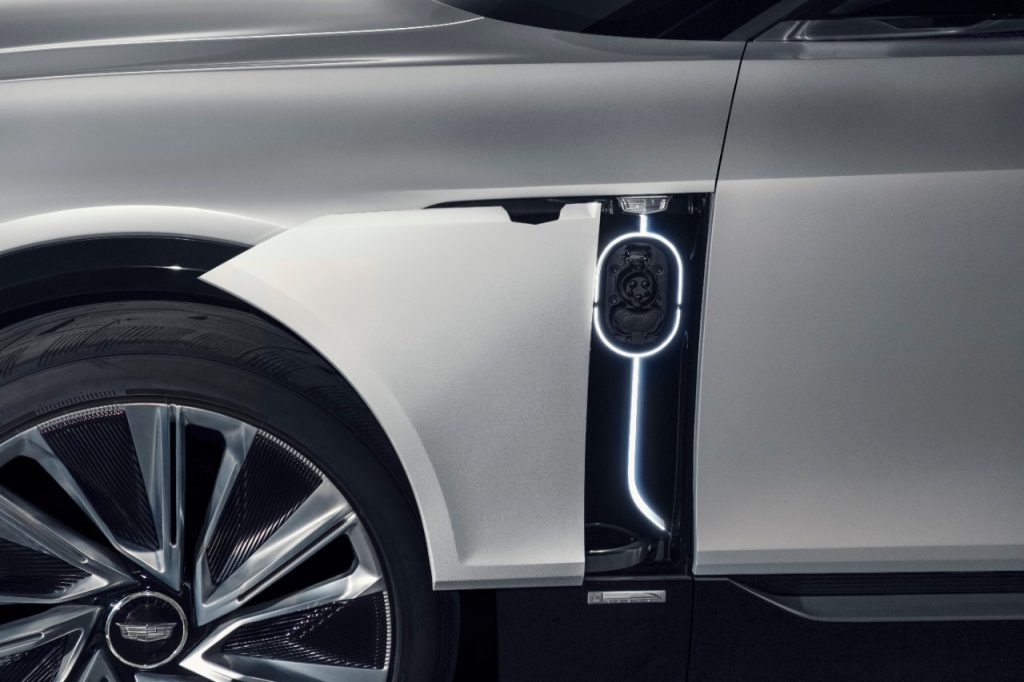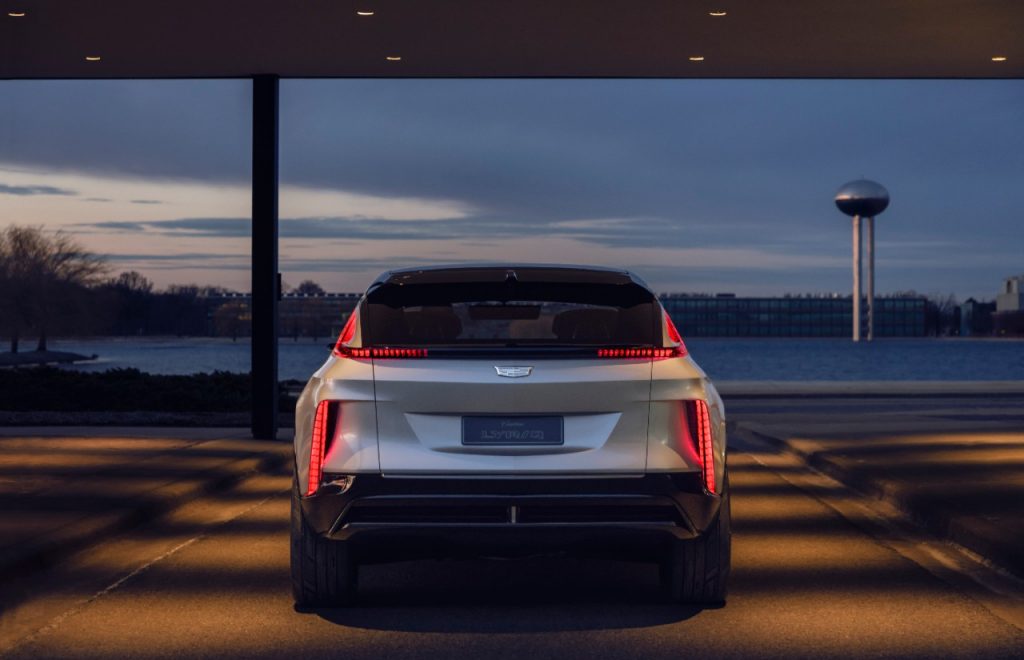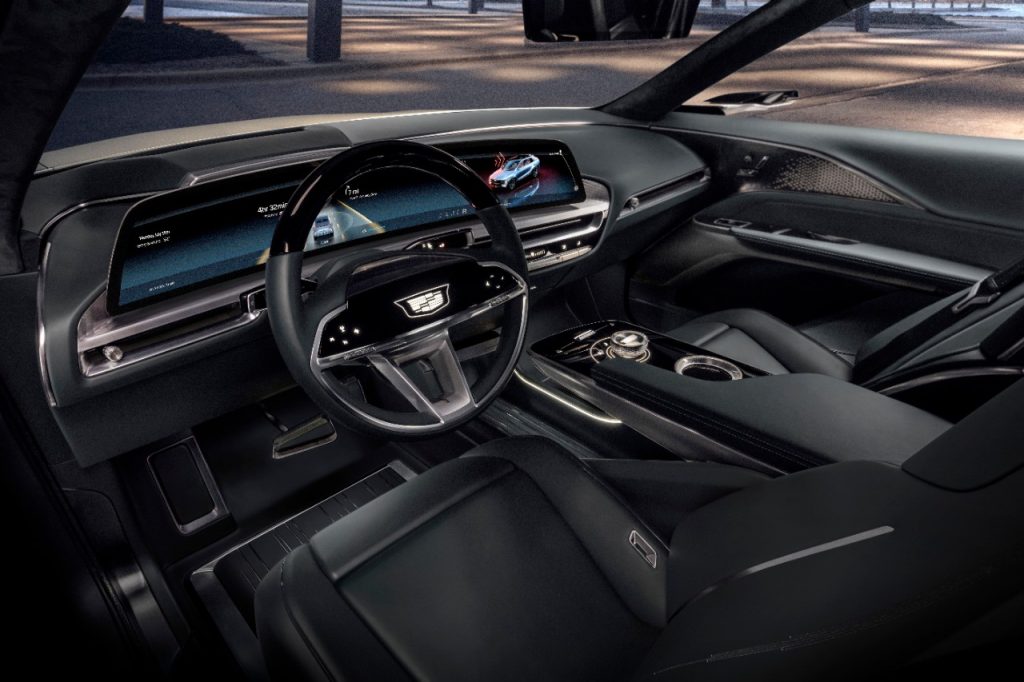Behind Cadillac’s Ambitious All-Electric Debut, the LYRIQ Crossover
Cadillac’s team of designers provides insight on the new luxury crossover

Cadillac’s first-ever all-electric vehicle is more than a show car design—it’s the long-awaited design revolution. LYRIQ, the electric portfolio-defining release, leverages decades of research and 100+ years of innovation, setting a path for the carmaker’s future and a standard for the luxury EV market. New technologies like augmented reality displays, remote self-parking, Super Cruise (hands-free driving) and an industry-leading dash-spanning LED screen help define the car’s premium design, enabled by GM’s new Ultium modular vehicle platform and battery system. LYRIQ “gave us an opportunity to step back and take a look at what we want Cadillac to be,” Andrew Smith, Cadillac’s Chief Designer, tells us. “Cadillac should be forward-thinking. Even though the form can change, the way we treat it is what makes it a Cadillac. It’s all in the details and the execution.”

The most notable differences between this vehicle and previous Cadillac models are the proportions and piercing lines. Uninhibited by the need to accommodate a combustion engine, the LYRIQ has a broader stance, larger cabin, bigger wheels (23 inches) and more performative lighting systems (the car “greets” the driver with a light show as they approach it.) Many of these features were teased with the 2016 Escala Concept Car, and it’s great to see them come to life. Though this debut is the show car version, it is near-production spec—meaning that most differences won’t be too noticeable.

“It’s funny,” Smith explains, “People say to me, ‘Well, proportionately, it looks kind of traditional.’ But it has classically gorgeous proportions and we finally have a platform that can allow us to do what we want. It has great stance, big wheels. Everything we’ve ever wanted to do, we could do.”

Not only is the GM Ultium platform the basis for the electric line moving forward, but it is also the battery technology that propels each vehicle. Offering ~100 kilowatt-hours of energy, each battery’s NCMA (nickel, cobalt, manganese, aluminum) composition reduces the total cobalt content by over 70%, saving the rare-earth element from over use. The batteries are stored within the body as sizable flat “pouches,” simplifying the transferring of power and accelerating the cooling process. Charging occurs quickly, courtesy of DC fast-charging that can be done at home or on the road at EV charging stations. Though one will need to charge less frequently, as the LYRIQ’s battery spec promises more than 300 miles of range.

“It’s still very much a Cadillac,” Smith says. “There’s a clean line from front to end. It’s not the Coke bottle-style you see from some other brands. It’s certainly much fuller and more controlled. All at once it feels kind of formal but relaxed. I think it does both and it certainly has that Cadillac presence.”

“Everything has been considered and beautifully crafted inside this interior and it takes what we discovered with Escala just one step further. But I still think when you put the two products side-by-side they’re from the same brand—from the same family,” Sharon Gauci, Executive Director, Global Industrial Design, tells us. “But what we didn’t want to do was turn this car overtly eco [aesthetically]. It still had to be beautiful. It still had to be luxurious. It still needed to speak to Cadillac going forward.”
There are impressive details throughout, including in the center console that creates a great looking material made from layered scraps of leather used for the interior along with pieces of aluminum; vertically stacked, it presents a unique, chic upcycled touch. Sensory surprises in elements like the accessory drawer, which is fitted with a beautiful bright blue suede-like liner made with recycled material, and the textured crystal control knob. Jennifer Widrick, Creative Design Manager, noted that some of the design was more akin to jewelry making than to traditional car design, and that the intent was to create moments that revealed themselves on first, second and further looks. Texture and knurling are used throughout to create a sense of drama.

“We’ve really juxtaposed the colors to achieve this very crisp, clean breath of fresh air on the exterior,” Widrick adds. Gauci notes that the color they used, named Prism, has been in development for several years and finally found a home in the LYRIQ show car. “It features new whites and an interference pigment and 14 layers of paint,” she says. It balances beautifully with the interior color scheme called Juniper, a dark green canvas that beautifully shows off the car’s details, she notes.

The team has succeeded in their mission to present a car that looks and feels different, but remains true to the foundation that has sustained the company for over a century. It’s meant to “drive the brand into a new era, while rewarding passengers with a more personal, connected and immersive experience,” Jamie Brewer, LYRIQ’s Chief Engineer, adds.

“It’s not a specific shift in something for electric, but it’s more true to the brand and growing it in a different direction,” Widrick says. “I think these transitions are very important—transition in pattern, transition in light. We’re trying to create something seductive and engaging that really draws your eye in. It is the transitions from light into wood, the peek at aluminum coming through—what a beautiful idea for an electric vehicle.”

For drivers behind the wheel and designers behind the creation, a Cadillac is defined by its performance. Luxurious yet robust, powerful but precise, this car boasts significant features and subtle details. The LYRIQ’s lighting and sound systems, for example, embody both ends of the spectrum. New noise-cancellation technology actively blocks road disturbances, employing microphones and accelerometers to target and eliminate the sounds emitted from the tire cavity. Inside, a partnership with AKG produces recording studio-level audio with 19 speakers creating rich, sprawling high-definition sound.

The LYRIQ’s lighting system acts as a visual partner for the audio set-up. Orchestrated lighting features adorn the 33-inch curved screen and storage spaces and speaker grilles boast backlighting. On the exterior, expressive brake and headlights emphasize the car’s electrification. The technological innovations are not merely performative. Tech-forward features like the augmented reality-assisted dash displays inform drivers while their eyes remain on the road, and Super Cruise offers drivers a moment of rest—as the car controls itself on over 200,000 miles of mapped highways and manages lane changes autonomously (as long as the GPS signal remains connected). Upon arrival, LYRIQ can park itself whether the driver is inside it or not—ultrasonic sensors allow the vehicle to maneuver into parallel and perpendicular spots—even remotely; when the driver returns, the splendor of LYRIQ’s nearly instantaneous torque, exquisite detailing and innovative technologies awaits them.
“It feels as though everything’s been touched and designed and crafted,” Widrick says. “And that’s ultimately the goal.”

“I’m so comfortable with this new design direction. It’s so Cadillac, but still so different. I’m really excited for where we’re going.” Gauci says. “There are design elements and an aesthetic that still makes it a Cadillac, yet we’re taking it so much further in terms of where we’re going from a design language point of view. This car is beautiful—really beautiful.”
Images courtesy of Cadillac












